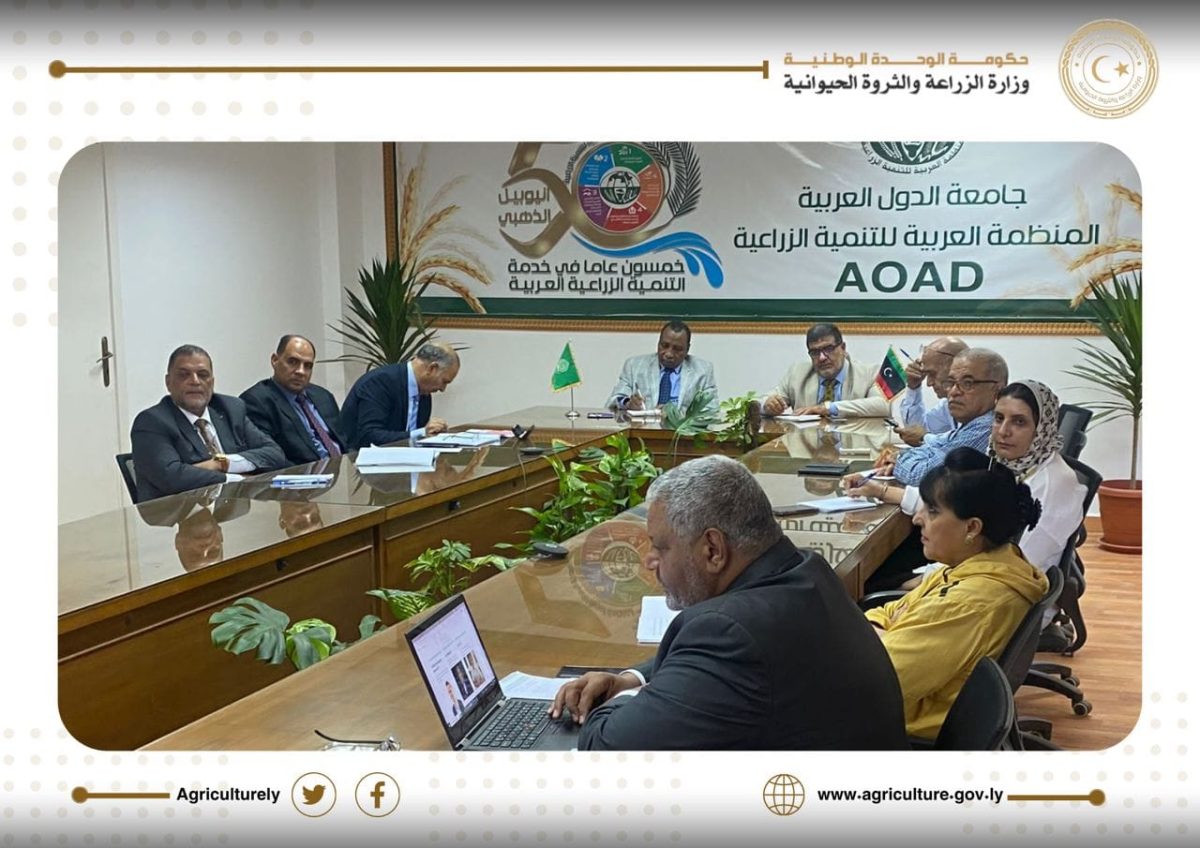Agricultural Ministry signs MoU with AOAD to developed improved seed production
Agricultural Ministry signs MoU with AOAD to developed improved ... Libya Herald


The Ministry of Agriculture and Livestock Signs MoU with AOAD

The Ministry of Agriculture and Livestock reported last Wednesday that it had signed a memorandum of understanding (MoU) with the Arab Organization for Agricultural Development (AOAD) to develop improved seed production and multiplication systems.
Project Overview
The project aims to strengthen the role of the Agricultural Research Centre and the Varieties Control and Seed Certification Authority in Libya. It also seeks to support and develop seed multiplication efforts in both the public and private sectors. The project is estimated to cost US$ 3 million and will last for a duration of 3 years.
Meeting in Egypt
The MoU was signed during a meeting held in Egypt, which was attended by the Undersecretary for Bureau Affairs and Agricultural Reclamation, Mohamed Al-Turki, and his accompanying delegation. The Director General of the Arab Organization for Agricultural Development, Ibrahim Al-Dakhiri, was also present at the meeting.
Partnership with ACSAD
In addition to the MoU with AOAD, another agreement was signed between AOAD and the Arab Centre for Studies of Dry Zones and Dry Lands (ACSAD). The objective of this agreement is to provide Libya with improved wheat seeds produced by ACSAD. This initiative aims to achieve self-sufficiency in wheat production, which is a strategic material for the country.
SDGs, Targets, and Indicators
1. Which SDGs are addressed or connected to the issues highlighted in the article?
- SDG 2: Zero Hunger
- SDG 17: Partnerships for the Goals
The article discusses the Ministry of Agriculture and Livestock’s partnership with the Arab Organization for Agricultural Development (AOAD) to develop improved seed production systems. This aligns with SDG 2, which aims to end hunger, achieve food security, improve nutrition, and promote sustainable agriculture. The partnership also falls under SDG 17, which focuses on strengthening global partnerships to achieve the goals.
2. What specific targets under those SDGs can be identified based on the article’s content?
- Target 2.3: By 2030, double the agricultural productivity and incomes of small-scale food producers, particularly women, indigenous peoples, family farmers, pastoralists, and fishers.
- Target 17.16: Enhance the Global Partnership for Sustainable Development, complemented by multi-stakeholder partnerships that mobilize and share knowledge, expertise, technology, and financial resources.
The article mentions the project’s focus on strengthening the role of the Agricultural Research Centre and the Varieties Control and Seed Certification Authority, as well as supporting seed multiplication efforts in the public and private sectors. These actions contribute to increasing agricultural productivity and incomes of small-scale food producers, which is Target 2.3 under SDG 2. Additionally, the partnership between the Ministry of Agriculture and Livestock and AOAD represents a multi-stakeholder partnership to enhance global partnerships for sustainable development, aligning with Target 17.16 under SDG 17.
3. Are there any indicators mentioned or implied in the article that can be used to measure progress towards the identified targets?
- Indicator 2.3.1: Volume of production per labor unit by classes of farming/pastoral/forestry enterprise size.
- Indicator 17.16.1: Number of countries reporting progress in multi-stakeholder development effectiveness monitoring frameworks that support the achievement of the sustainable development goals.
The article does not explicitly mention specific indicators. However, to measure progress towards Target 2.3, the indicator 2.3.1 can be used, which measures the volume of production per labor unit by classes of farming/pastoral/forestry enterprise size. For Target 17.16, the indicator 17.16.1 can be used, which measures the number of countries reporting progress in multi-stakeholder development effectiveness monitoring frameworks that support the achievement of the sustainable development goals.
4. Table: SDGs, Targets, and Indicators
| SDGs | Targets | Indicators |
|---|---|---|
| SDG 2: Zero Hunger | Target 2.3: By 2030, double the agricultural productivity and incomes of small-scale food producers, particularly women, indigenous peoples, family farmers, pastoralists, and fishers. | Indicator 2.3.1: Volume of production per labor unit by classes of farming/pastoral/forestry enterprise size. |
| SDG 17: Partnerships for the Goals | Target 17.16: Enhance the Global Partnership for Sustainable Development, complemented by multi-stakeholder partnerships that mobilize and share knowledge, expertise, technology, and financial resources. | Indicator 17.16.1: Number of countries reporting progress in multi-stakeholder development effectiveness monitoring frameworks that support the achievement of the sustainable development goals. |
Behold! This splendid article springs forth from the wellspring of knowledge, shaped by a wondrous proprietary AI technology that delved into a vast ocean of data, illuminating the path towards the Sustainable Development Goals. Remember that all rights are reserved by SDG Investors LLC, empowering us to champion progress together.
Source: libyaherald.com

Join us, as fellow seekers of change, on a transformative journey at https://sdgtalks.ai/welcome, where you can become a member and actively contribute to shaping a brighter future.







